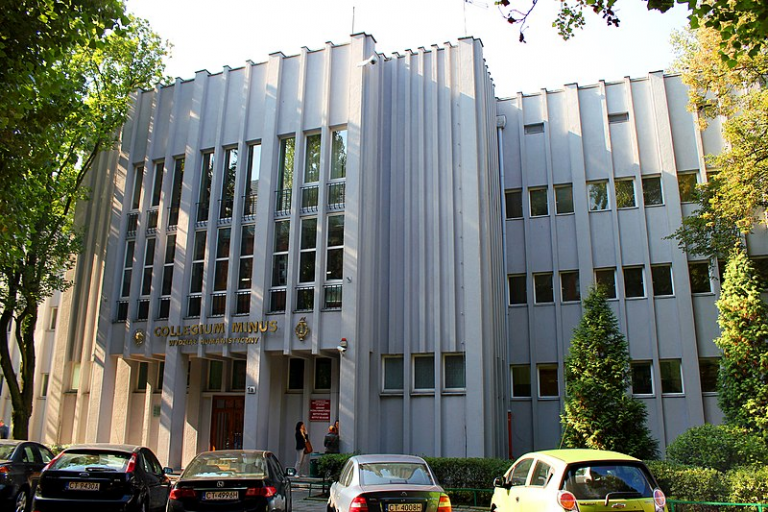Smart specialization has rapidly acquired a central position in European Union’s regional development strategies. The basic principles of it are highly appealing and to be warmly welcomed.
The Ideal
Smart specialization is, in words of Heimeriks and Balland, about identifying ‘the unique characteristics and assets of each region that highlight region’s competitive advantages’. As an integrated and place-based economic transformation agenda, smart specialisation, ideally, flows from outward-looking analysis to the creation of an excellence-driven vision, and then to setting objectives and priorities, and finally, to implementation. In achieving this ambition, the broad engagement of the main stakeholders would, and should, result in a clear and shared excellence driven vision, which is seen to be a prerequisite to further mobilisation and solving the many regional development related issues.
Indeed, smart specialization process is, as Estensoro and Larrea crystallize, ‘a process of discovery and learning on the part of entrepreneurs, who are the best positioned agents to search for the right types of knowledge.’ As such, according to Kevin Morgan, ‘smart specialisation is the most ambitious regional innovation programme ever to be launched in the European Union’.
Smart specialization has pushed the policy understanding of the very nature of innovation beyond high-tech and product portfolios, and thus innovation, in this thinking, is no longer banded together only with R&D expenditures and R&D employment. Perhaps, most importantly, as Roberta Capello and Henning Kroll observe, the European Union seems finally to matured enough abandon its ambition to identify a one-size-fits-all policy for very different regions of Europe.
The Traps
Smart specialisation is expected not only to be of use in constructing a shared vision and pooling scattered resources, but also in fixing the problems of poorly functioning governance systems and lack of local/regional leadership. The ideal and promise of smart specialization is enticing indeed but perhaps not as novel as it appears. The fairly linear world view of it suggests it may be old wine in a new bottle, but, as the bottle is an elemental part of the existing governance systems, it may also be old wine in an old bottle but with clever branding. The end result is dependent on the capacity of European regions to navigate the main policy traps. Hopefully smart specialization turns out to be new wine renewing all sorts of bottles.
In order to become a transformational power, smart specialization requires supporting institutions that are not in conflict with each other. In practice, institutions rarely provide regional development efforts with clear answers on what is and is not possible, or on what is rewarded and what is sanctioned. If institutions were in conflict, smart specialisation process would be in a danger of falling into an institutional conflict trap. If that happened, the nicely designed smart specialisation process and the collective efforts it is embedded in would be in danger to dissipate. In this kind of situation the construction of a shared vision would be more than challenging. Additionally, trust-based social relations might be hampered or prevented from being built.
The institutional conflict trap is closely related to the governance trap. A smart specialisation strategy, as a bottom-up and entrepreneur-led collective endeavour, is dependent on subnational-level actors’ autonomy and power to actually make choices and set collective objectives, construct a shared vision and so forth. Centralised systems more often than not weaken the capacity to act at subnational levels.
It is never easy to mobilise and co-ordinate scattered resources, powers and expertise to boost collective smart specialization efforts, and therefore, smart specialization cries out for a governance system that would boost collective efforts instead of slowing them down
Conflicting institutions and mismatch between the ideal of smart specialisation and governance reality remind that the lack of capabilities to manage smart specialization processes, and underdeveloped understanding of them, may trap the idealised strategy process too. Many regional development agencies and their officials simply do not know how to manage a multi-actor process. It may also be that regions rely too much on consultants or do not invest in training in leadership and process management but rely on traditional understanding of public agency. As Henning Kroll says: ‘many regional development officers have had a hard time learning how smart specialisation procedures differ from traditional priority-setting industrial policies’.
The smart specialisation approach believes strongly in the capacities of entrepreneurial agents to identify and frame the technologies and opportunities to be focused on and selected as spearheads in regional development and innovation. However, smart specialization enthusiasts should not expect that everybody invited to join a process would be willing to invest time and money in a collective strategy process. Smart specialization enthusiasts should not expect either that all entrepreneurial agents would grasp and respect the importance of a collective strategy process to begin with or appreciate the rationale behind searching for a shared vision.
Moreover, it remains to be seen whether mobilised entrepreneurial actors will be willing to open up their thinking to other entrepreneurial actors who are potentially their competitors. And, it would be overly idealistic to assume that various stakeholders would be able to leave their own incentives, logics, drivers, ambitions, visions and paymasters behind and think only of the region’s best interests. A mobilisation trap is easy to fall into too.
Conclusion
Smart specialisation is expected to answer to one of the main challenges of any policy making: how to involve a wide spectrum of agents in a regional innovation policy formulation, and how to choose priorities in a multi-actor and multipurpose context that is supposed to reach beyond sectoral interests and public sector supremacy. Smart specialisation guidelines suggest that related strategies should provide regional development policy makers and practitioners with renewed leadership in the many efforts to achieve this and hence boost regional development.
However, smart specialisation has a better chance to make a difference in regions with a well-established and shared place-based leadership. The smart specialization dream is seductive to enjoy but policy traps are all too real in many places. Hopefully, we will wake up one day with a smile.
This writing is an extract from Sotarauta, M. 2018. Smart specialization and place leadership: dreaming about shared visions, falling into policy traps? Regional Studies, Regional Science, 5(1) 190-203
References
Capello, R., & Kroll, H. (2016). From theory to practice in smart specialization strategy: Emerging limits and possible future trajectories. European Planning Studies, 24(8), 1393–1406. (iv)
Estensoro, M., & Larrea, M. (2016). Overcoming policy making problems in smart specialization strategies: Engaging sub-regional governments. European Planning Studies, 24(7), 1319–1335. (ii)
Heimeriks, G., & Balland, P.-A. (2016). How smart is specialisation? An analysis of specialisation patterns in knowledge production. Science and Public Policy, 43(4), 562–574. (i)
Kroll, H. (2015). Efforts to implement smart specialization in practice—leading unlike horses to the water. European Planning Studies, 23(10), 2079–2098. (v)
McCann, P., & Ortega-Argilés, R. (2013). Smart specialisation, regional growth and applications to EU cohesion policy. Regional Studies, 49(8), 1291–1302. (i)
Morgan, K. (2017). Nurturing novelty: Regional innovation policy in the age of smart specialisation. Environment and Planning C: Politics and Space, 35(4), 569–583. (iii) Sotarauta, M. 2018. Smart specialization and place leadership: dreaming about shared visions, falling into policy traps? Regional Studies, Regional Science, 5(1) 190-203





Kommentit